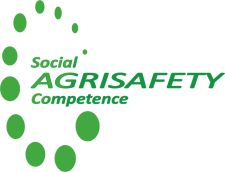
In spite of the progress achieved with the Community strategy on health and safety at work (2002-2006), the 4th European survey of working conditions show that occupational hazards are not being reduced in a uniform way and certain sectors, between them agriculture are still particularly dangerous. The current strategy 2007 -2012 includes the challenge of new and larger flows of migrants towards Europe in the field of health and safety that is continuing to grow in importance and demands to the member States for implementing a package of instruments which guarantee a high level of compliance with the legislation, in particular in SMEs and high-risk sectors. Furthermore the strategy also mentions that special attention should also be paid to training for workers to make them aware of the risks in the company and how to prevent and combat them. This is particularly important for SMEs and migrant workers. SPAIN A significant amount of migrants (non-Spanish speakers) work in the agriculture sector in Spain, so it is really a problem to strengthen training on health and safety at work. The affiliated foreigners in the social security in the Special agricultural Scheme in 2009 involved a 23.40% of total Bulgarians in Spain, 19.17% of Polish, 29.91% of Romanians and 34% of Moroccans (2009 Statistics Yearbook). ROMANIA It is the country with the largest number of people employed in agriculture in EU 27 (2762 thousand in 2007). Labour productivity growth represents an essential condition for agriculture development and bridging up the gaps between Romania’s and the EU agricultural sectors. In order to narrow the productivity gap, the educational level of the population employed in the Romanian agriculture has to get close to that existing in the other EU countries, both under quantitative and qualitative aspect. (Agricultural Economics and Rural Development, no. 2, 2009). BULGARIA at first axis of the Bulgarian National Strategy Plan for Rural Development indicates that it is really interesting meeting the requirements of health and safety at work. Furthermore the plan details that the majority of the people engaged with agricultural activities lack formal agricultural training. POLAND Workplace safety is still an issue in Poland’s agriculture and it is considered to be one of the most unsafe sectors. Despite improvements in recent years, the level of occupational accidents on farms is higher than in other sectors. (2007 report European Working conditions).
AIMS The overall goal of this project is to transfer at European level the Spanish training course on Health and Safety at work (risk prevention) in agriculture to train farmers, remunerated persons and self-employed workers The idea is based in the transference this complete programme to other countries (Poland, Romania and Bulgaria) with some of the following characteristics:
• significant amount of employment
• deficiencies in labour risk prevention training
• high accidents rate
• high volume of in-migrants from these nationalities working in agriculture Furthermore other main objective is the promotion if the use of ICT through adaptation of the programme to a B-Learning system so it can be adapted and used in the target countries and agriculture sector.
